Published: 17 Aug 2018
The fascinating history behind Mughal jewels and Gold jewellery
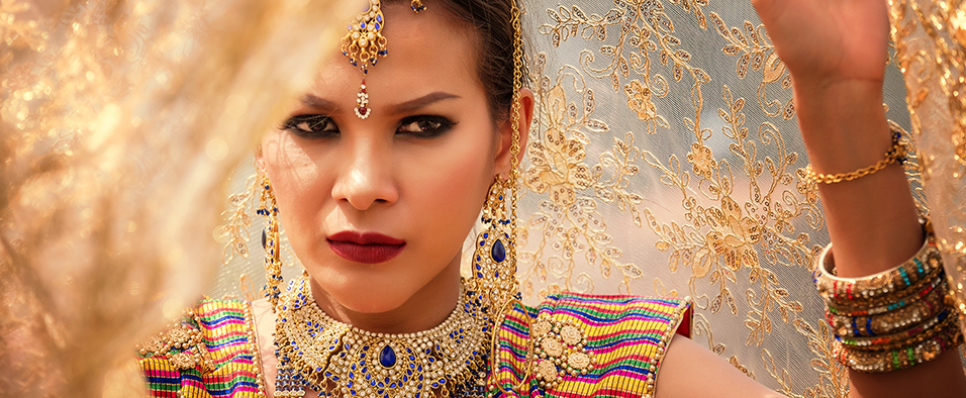
The Mughals came to India in the 16th century and brought with them exceptionally talented and skilled craftsmen that redefined gold jewellery and the art of ornamentation of the time. Some of the best-known goldsmiths of the era worked under the Mughals. Mughal jewellery was beautifully carved, and the degree of intricacy in their designs was what set it apart.
Jewellery, at the time, was symbolic of power and wealth. Members of the royal family displayed their status by wearing heavy gold jewellery such as a bejewelled turban, toe rings, necklaces etc. The Mughals introduced designs from central Asia, developing a blend of Hindu and Islamic styles.
Many Mughal kings married Rajput princesses thereby bringing Rajput craftsmen into the Mughal fold. This led to a fresh amalgamation of jewellery that combined the delicate designs of the Mughals with the fine detail of the Rajputs.
Mughal gold jewellery-making techniques
The famous Kundan jewellery was popularised by the Mughals. The art of setting the stones on gold at room temperature was a trademark jewellery-making technique of the Mughals. The word Kundan means highly refined gold and hence highly refined and pure molten gold is used in Kundan jewellery.
The exuberant form of Rajasthani jewellery, Jadau, also finds its roots in Mughal jewellery. It involves a three-level tasking process of setting the stone on pliable gold.
The art of enamelling or Meenakari also flourished during the Mughal era. Meenakari is a time-consuming technique that produces a floral finish on both sides of the jewellery piece. Apart from this, complex techniques such as filigree (jewellery pieces involving interwoven wires of gold) and thewa (jewellery-making involving intricately worked-out sheet gold on molten glass) showcased exemplary and unique Mughal craftsmanship.
Quintessential Mughal gold jewellery
During the Mughal era, these gold jewellery-making techniques and ornate designs were celebrated throughout northern India, especially in regions corresponding to the modern-day states of Rajasthan, Madhya Pradesh, Orissa, and Gujarat. But today the imperial designs of Mughal gold jewellery have crossed the international border and are recognised and admired all over the world.
- One of the most common Mughal jewellery designs was that of the crescent and stem. Earrings were made in the shape of a crescent covering the entire ear with a small stem on top.
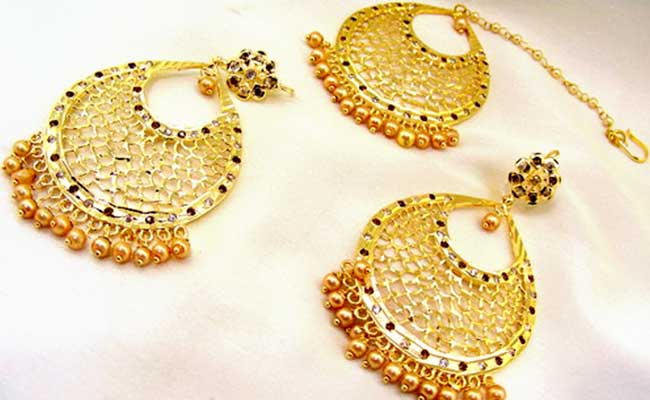
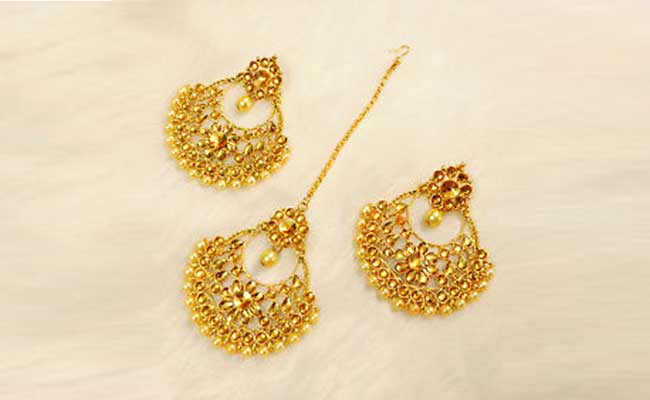
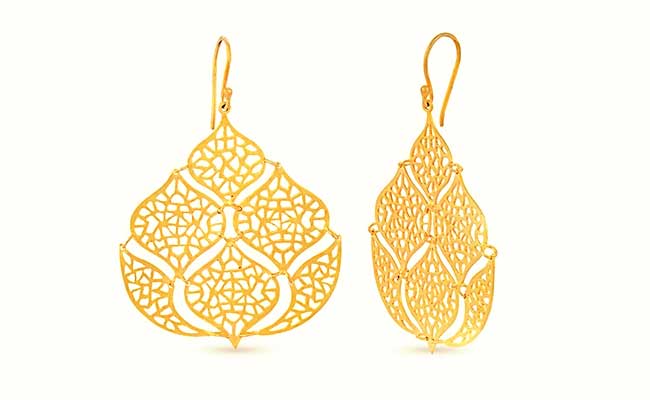
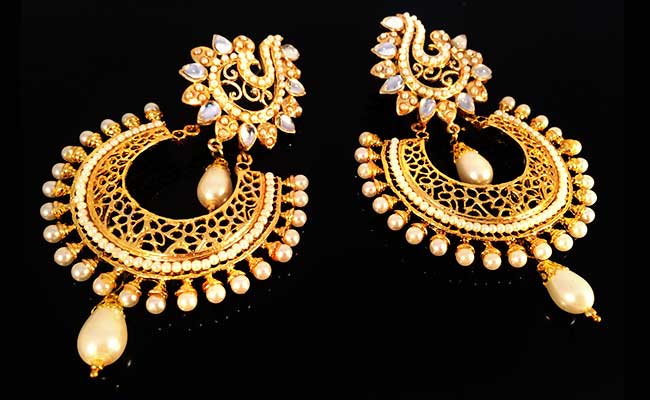
- The silk turbans worn by Mughal emperors were decorated with ornaments enamelled in gold.
- Wrist ornaments (kadas, bangles, bracelets) were mostly made with enamelled gold elaborated with intricate and elegant floral designs.
- Huge rings worn by the emperors were made of pure gold or were enamelled with gold.
- The royal Mughal women often wore intricately carved gold-plated anklets.
- One of the most popular gold accessories from the Mughal era was the ‘nath’. This nose ring made of circular gold wire threaded with ruby and pearls was worn by every Mughal empress.
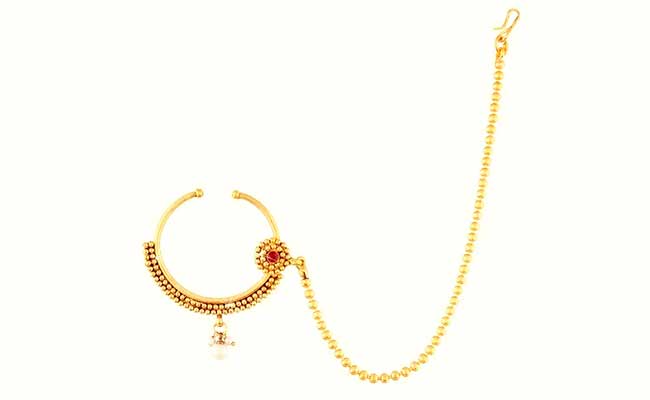
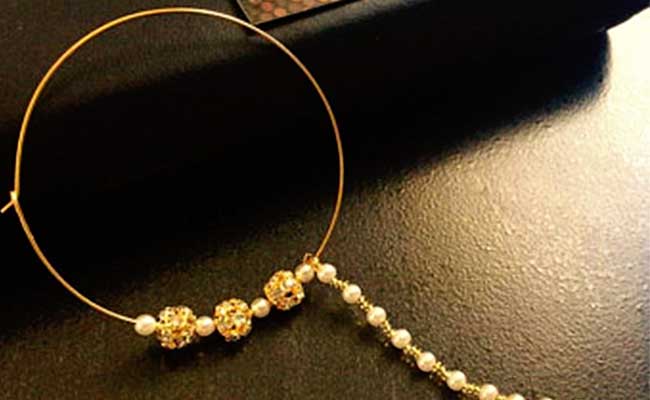
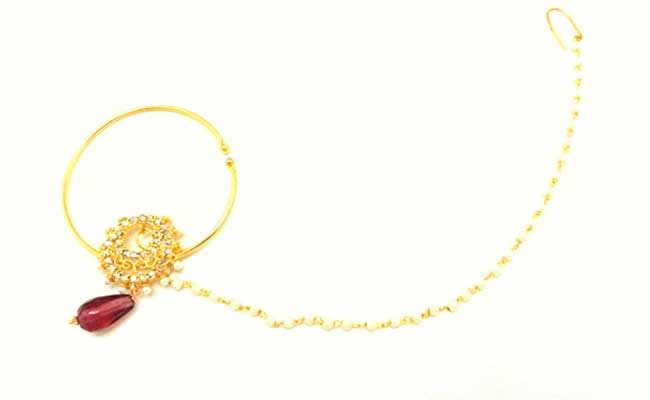
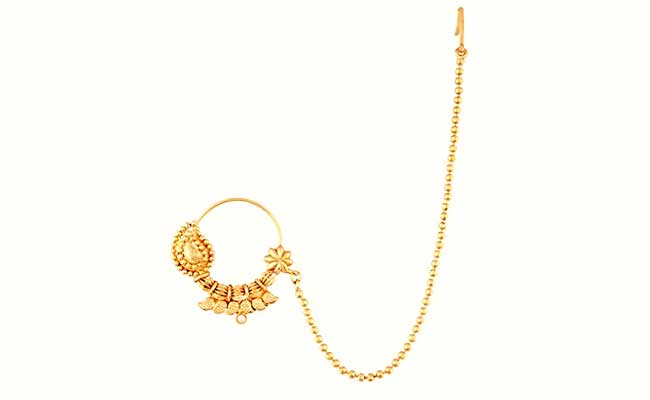
- Armlets worn by royal women were adjustable with clamps or strings, and made of pure or enamelled gold as well.
- The ‘karan phool’ jhumka evolved during this time; these were characterised by a chain and a beautiful floral motif attached.
- The Mughals also developed various styles of embroidering shoes with gold thread, which was referred to as mojdi.
During the Mughal era, these gold jewellery-making techniques and ornate designs were celebrated throughout northern India, especially in regions corresponding to the modern-day states of Rajasthan, Madhya Pradesh, Orissa, and Gujarat. But today the imperial designs of Mughal gold jewellery have crossed the international border and are recognised and admired all over the world.











